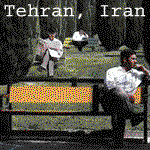Iraq violence: Monitoring the surge
 3 August 2007
3 August 2007The BBC World Service is monitoring its effects, week by week, by looking at casualty figures, the pressure on hospitals and quality of life for ordinary civilians.
The graphics and analysis are based on figures from the US and Iraqi authorities, Baghdad's hospitals and three families from different neighbourhoods in the capital.
SECURITY
 During the seven-day period from 26 July to 1 August there were 482 violent deaths across Iraq. This is a rise of nearly 70 people on last week's total.
During the seven-day period from 26 July to 1 August there were 482 violent deaths across Iraq. This is a rise of nearly 70 people on last week's total.Of the groups charted in the graphic above, only the Iraqi police saw their number of fatalities fall.
Iraqi civilians had both the greatest rise in their number of people killed and the greatest total number of deaths; as has been the case since this series of reports began seven weeks ago.
Looking back over the whole of July, Iraqi officials say more than 1,600 civilians were killed.
This figure is higher than the number of deaths for February this year, when the US surge began.
Political developments in Iraq this week include the announcement from the main Sunni Arab political bloc in the country, the Iraqi Accordance Front, that it is withdrawing from the government.
ECONOMICS
 Fuel shortages remain a major problem for Iraqis, with long power cuts and fuel queues a common feature of civilian life, particularly in Baghdad.
Fuel shortages remain a major problem for Iraqis, with long power cuts and fuel queues a common feature of civilian life, particularly in Baghdad.The families helping paint a picture of these hardships in this survey are from different areas of the city - which can mean different pressures according to the religious make-up of the area and the subsequent security risks.
 Family 1 is located in Palestine Street, a Shia neighbourhood in the east of the capital.
Family 1 is located in Palestine Street, a Shia neighbourhood in the east of the capital.Family 2 is located in Zayouna, a mixed neighbourhood in south-east Baghdad.
Family 3 lives in Saba Abkar, a northern Sunni neighbourhood.
Fuel shortages worsened for two out of the three families this week. The Palestine Street family saw their access to power plunge from an hour a day to 10 minutes, while the Zayouna family received no power for the entire week. The third family experienced no change at 30 minutes a day.
There have been some improvements; the al-Hurriya district of Baghdad has had a very limited access to electricity this week for the first time in three weeks.
The people of the Adhamiyia district are again without power.
Day-long petrol queues are still being reported by some, as are waits of between seven and eight hours, by others.
The price of fuel at forecourts is 9,000 Iraqi dinars ($7) for 20 litres. After falling last week black market prices are rising again; 20 litres of fuel now costs 25,000 dinars.
Prices for gas cylinders range from 7,500 dinars at petrol stations, up from 4,000 dinars, to 30,000 dinars on the black market in Baghdad, and 40,000 dinars on the black market in Falluja, where cars are not allowed into town.
Food is scarce in the Adhamiyia district, as food trucks are all being checked by the Iraqi army before being allowed inside.
The shortages come as a report by Oxfam and Iraqi NGOs has said that nearly a third of Iraq's population needs emergency aid, while US authorities say corruption in the country is so bad that it amounts to "a second insurgency".
 One of the al-Kindi hospital's staff, an assistant pharmacist was killed this week, as was a physiotherapist working for the Iraqi Olympic committee.
One of the al-Kindi hospital's staff, an assistant pharmacist was killed this week, as was a physiotherapist working for the Iraqi Olympic committee.Figures for the number of people arriving at the hospital after suffering violent injuries have not yet been compiled.
In the last seven days the al-Yarmouk hospital has received a large number of unidentified bodies, including 30 from Dura, eight bodies from the Taji district, seven from the Amil and Bayaa districts as well as the bodies of nine policemen.
Data compiled by BBC producer Mona Mahmoud
Labels: Iraq














0 Comments:
Post a Comment
<< Home